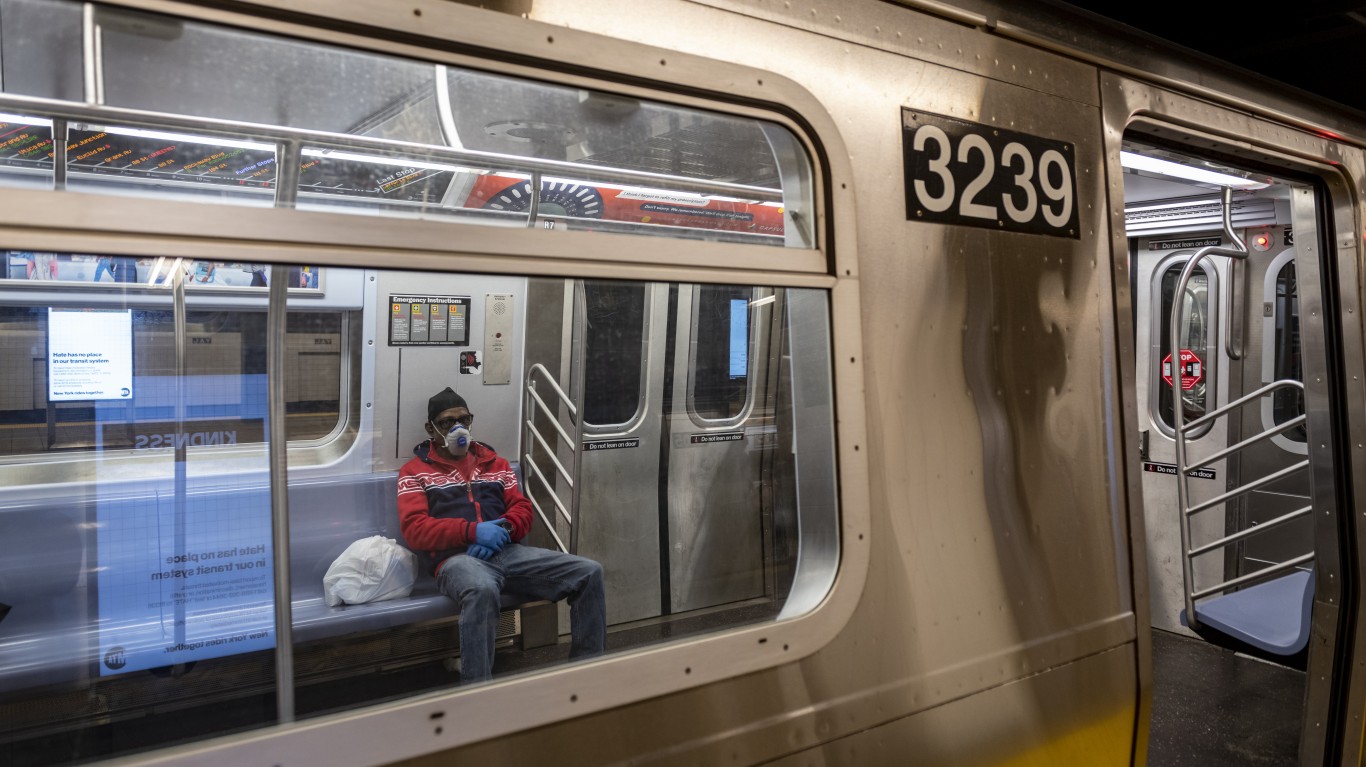

U.S. Total Deaths Near 70,000
According to the Bing COVID-19 Tracker, global COVID-19 cases have reached 3,584,174. Active cases hit 2,164,603, which is a gain of 36,805 since yesterday. Recovered cases rose to 1,167,991, up by 40,104, and deaths reached 251,580, a spike of 4,089.
Total COVID-19 confirmed cases in the United States hit 1,208,674, or a third of the world’s total. Active cases reached 979,058, a surge of 17,736, and recovered cases were 159,936, higher by 6,690. Fatal cases in America reached 69,680, after adding 1,394 in a day.
Death counts are already ahead of some models that forecast between 60,000 and 66,000. It appears they will be close to a model figure released on April 1, which showed a forecast of between 100,000 and 240,000 before the end of the first week in August.
New York City’s Active Case Problem
New York City, long the center of the COVID-19 pandemic, has reached 174,331 confirmed cases and 13,538 deaths. Each figure is suspected to be undercounted. One of the city’s challenges is the percentage of confirmed cases that are still active. That figure is currently 160,793, or 92% of confirmed cases.
On a national basis, the ratio is much better, at 81%, with active cases of 979,058 against confirmed cases of 1,208,674.
The New York City number is not entirely outside the norm. In some other large cities and counties, the ratio is also unfavorable. Cook County, which includes Chicago, has 61,178 active cases against 63,840 confirmed cases, or 96%. Los Angeles County, which includes Los Angeles and several other cities, has 24,960 active cases against 26,217 confirmed cases, for a ratio of 95%.
The reason for the disparity may be the growth of active cases against confirmed cases, which in many cities is rising faster than the number of deaths. The period over which people recover can be two to six weeks, and in some serious cases longer. This leaves them on the active case list for as much as a month.
The measure for recovery is also strict, which may keep people on the active case list. The Centers for Disease Control and Prevention (CDC) says recovery is measured by people who have not had a fever for three days. Those taking fever-reducing medicine do not count. Alternatively, a person has to be at least seven days from when their symptoms started. People who have had two negative tests in 24 hours also qualify as recovered.
None of this information entirely explains why active cases tend to be higher in many cities than the national average. It does bode poorly for these cities if confirmed cases start to rise again.
Germany May No Longer Be Envied by Other Large Countries
Germany was supposed to be the model for how large countries should track and treat COVID-19. Recent figures show that the rise in confirmed cases and deaths in Germany means that is less likely to be true. While the number of people who have recovered is large, death figures have started to surge.
Germany has 166,152 confirmed cases. Its recovered case figure is 127,643, or 77%, but the number of fatal cases has reached 6,993, or 4% of confirmed cases. That ratio is still well below deeply troubled Spain, which has 247,122 confirmed cases and 25,428 deaths.
Germany, which was almost totally locked down and has extensive testing and tracking of COVID-19 positive cases, has begun to open up. At the same time, deaths have started to rise at a rate of 100 to 200 per day. This has lifted it close to the daily figures in Spain and Italy. That may be because the infection rate is undercounted by a factor of 10 times, according to the University of Bonn. More people than expected are sick, which means the number of people dying will tend to be higher than expected as well.
The German example is more proof that death rates and the ratio to confirmed cases, even when reported by the government, can be highly inaccurate.
Essential Tips for Investing: Sponsored
A financial advisor can help you understand the advantages and disadvantages of investment properties. Finding a qualified financial advisor doesn’t have to be hard. SmartAsset’s free tool matches you with up to three financial advisors who serve your area, and you can interview your advisor matches at no cost to decide which one is right for you. If you’re ready to find an advisor who can help you achieve your financial goals, get started now.
Investing in real estate can diversify your portfolio. But expanding your horizons may add additional costs. If you’re an investor looking to minimize expenses, consider checking out online brokerages. They often offer low investment fees, helping you maximize your profit.
Thank you for reading! Have some feedback for us?
Contact the 24/7 Wall St. editorial team.



